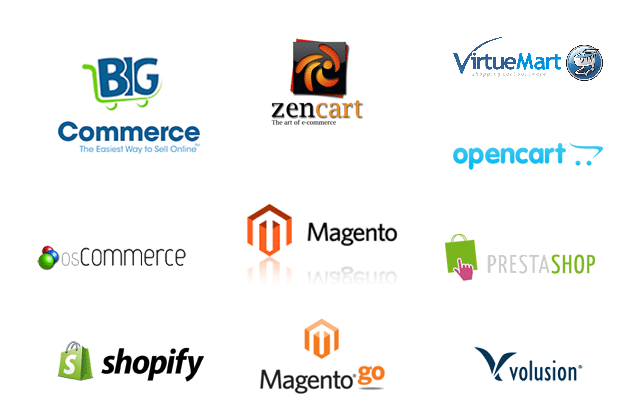Scaling an eCommerce business to the enterprise level is challenging in so many ways: your new enterprise business grows to take up all your free time, requires you to keep your product range refreshed or risk becoming irrelevant, and turns the process of marketing into a relentless battle for exposure. And then there’s the most immediately-vital consequence: the immense demand it places upon your online platform (you can only sell online if your store is up to the task of handling the traffic and orders).
One part of overcoming these fresh challenges is simply getting accustomed to the new paradigm of your workday, while another is relying on support and guidance from others to figure out the best ways to proceed — but the most significant part is ensuring that your underlying e-commerce solution is up to the task.
If you’re fortunate enough to already be using a system that can handle enterprise demand, then you can simply continue… but I’ll assume for the sake of this piece that you’re not using a system like that, in which case you know that you have a big decision ahead of you: which solution should you choose? Here’s how you can decide:
Identify your specific needs and budget
Every platform has different strengths and weaknesses, so the first thing to do is determine what exactly you’re going to be prioritizing. For instance, you might want your store to be the fastest of its kind (in which case you’d want performance above everything else), or you might instead want something that supports as many payment processors as possible (in which case you’d go for something with a strong flair for cross-platform and/or international selling).

If you make fairly few high-value sales (instead of many low-value sales), you might not need a platform capable of handling 5000 simultaneous orders, so you could save money by choosing a less-powerful platform (or by opting for one of the lower tiers offered by your preference). The goal is to get the balance right between power and affordability.
This will also affect how likely you are to choose a self-hosted open-source solution. If you have in-house development skills or a development agency on retainer, then the incredible flexibility of open-source software might be very tempting. If you’re content with paying a single sum every month to cover everything, then a hosted platform will be better for you.
Carefully review feature listings
To give each prospective CMS provider an opportunity to make a good case for why you should choose it, head to each site and carefully consider the claims you find. How do they stack up? You can tell a lot about what each provider prioritizes by the order in which particular features and strengths and mentioned. In comparing its Plus tier to Magento, for instance, Shopify immediately brings up scalability and expert support (two of its main strengths).

Of course, you shouldn’t take those comments as they are. Instead, you should investigate them further, deciding how significant they actually might be. For example, while it’s true that Shopify has phenomenal support, there’s no inherent reason why you can’t use something like Magento in combination with a third-party support solution — it might even end up being more cost-effective, particularly given the efficiency improvements you can achieve using custom-built third-party Magento extensions.
Consult comparable businesses
An option that many aspiring enterprise sellers overlook is speaking to existing enterprise sellers to learn about their experiences. While it isn’t a good idea to approach potential competitors (they’re unlikely to want to help you!), you can look for comparable businesses in different niches and ask them about the platforms they use.
This is a really good way to get direct commentary on support services in particular. One company might promise great support but not really deliver it, so if all the users of a particular CMS have great things to say about their provider, that’s an excellent sign. You can also dig deep into the features, finding out how useful and intuitive they really are.
To find suitable businesses, try Googling “businesses using [CMS name]” (e.g. “businesses using Magento 2”) — you should find some helpful lists. You can also try joining some social media or forum groups for specific platforms . Not all the people there will run large eCommerce businesses, but they’ll have a lot of experience with the platforms and offer tremendous insight into the most fundamental pros and cons.
Experiment with free trial periods
Almost every SaaS business operating today offers a free trial of some description. You might get indefinite use of the free tier of a freemium service, and/or have anywhere between 7 and 30 days to sample the full functionality of a paid service… so why not take advantage by using those trials to get some idea of how the interfaces suit you?

This will only get you so far, of course, because you’re not really going to be able to run enterprise-level testing on a store you’ve just created. You could organize a full-on performance test, but it wouldn’t entirely replicate real-world traffic (though services like Micro Focus can get very close), so it might be misleading. But that’s something you should infer through comments from real users and performance commitments from the providers (such as 99.97% uptime).
Instead, focus on what it’s like to use each system. How do you create content? How do you upload products? What do you make of the available extensions? How do the themes look? Do what you can with the time available, and you’ll end up with a lot of valuable information to help you make an informed decision.
By now, you should be feeling better equipped to choose an enterprise-level eCommerce solution! Magento, of course, is a fantastic choice for enterprise sellers, offering unrivaled customization options and being available as a self-hosted option if you’re determined to take full control over everything, but you should consider every platform on the market. In the end, you need to choose whichever one seems best for you.
















